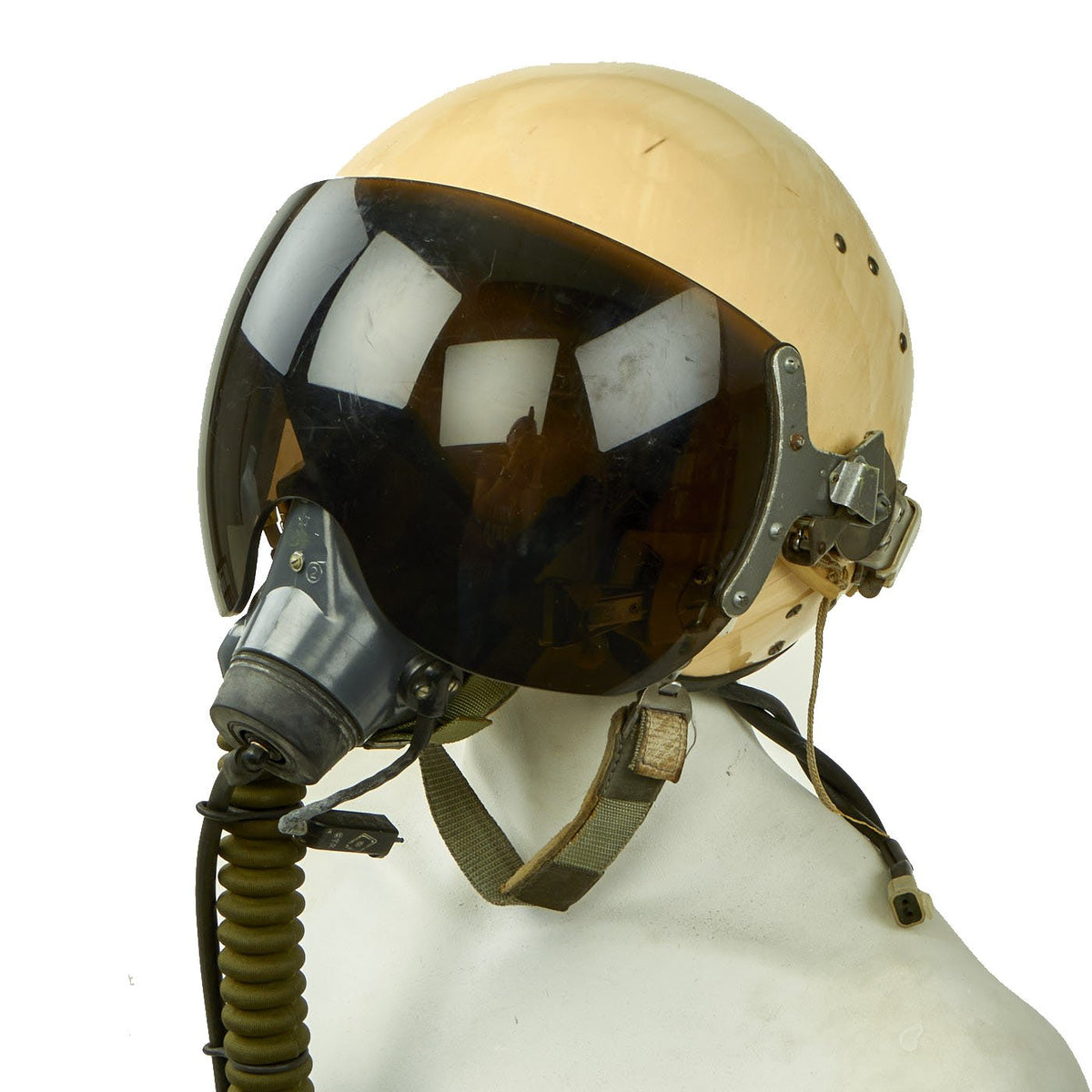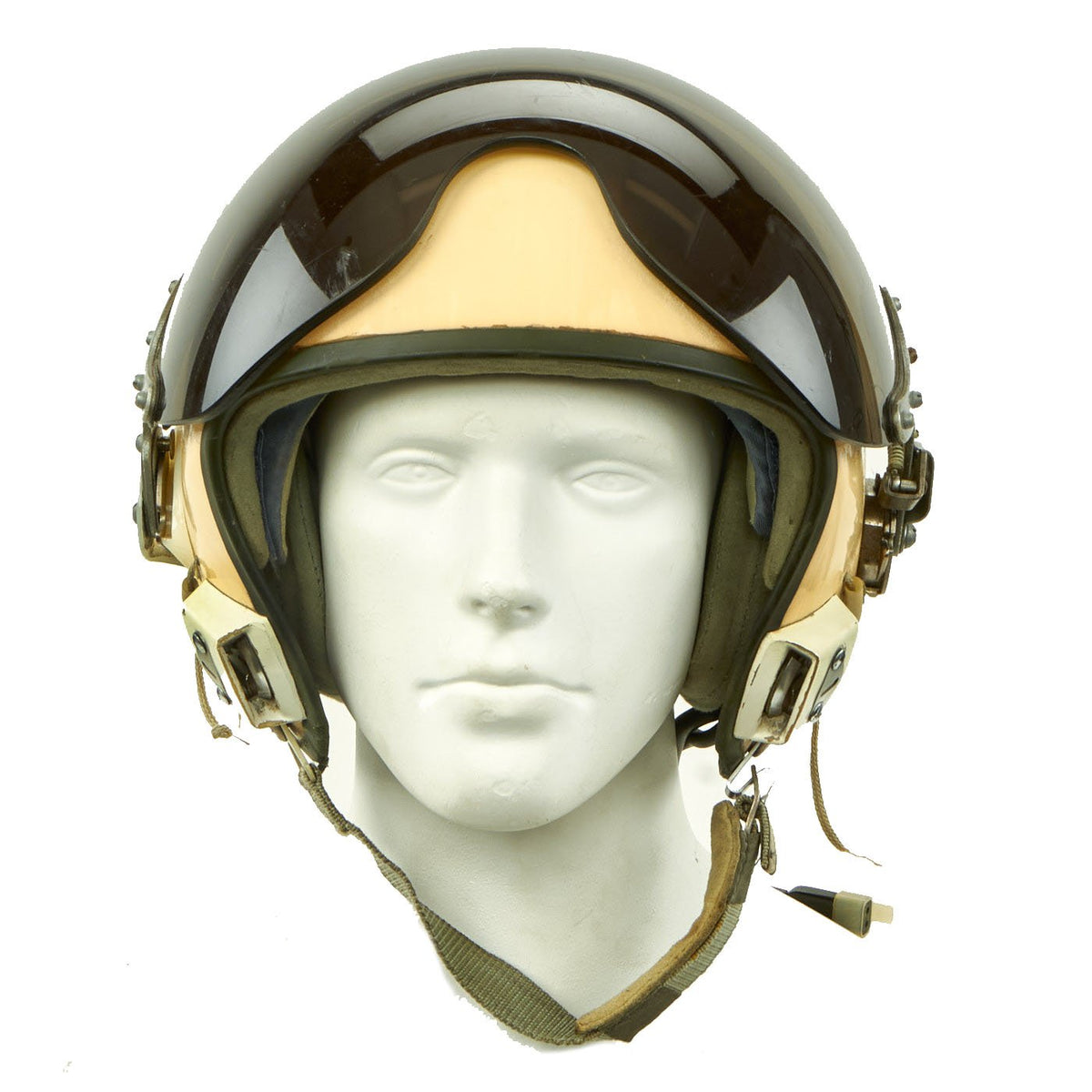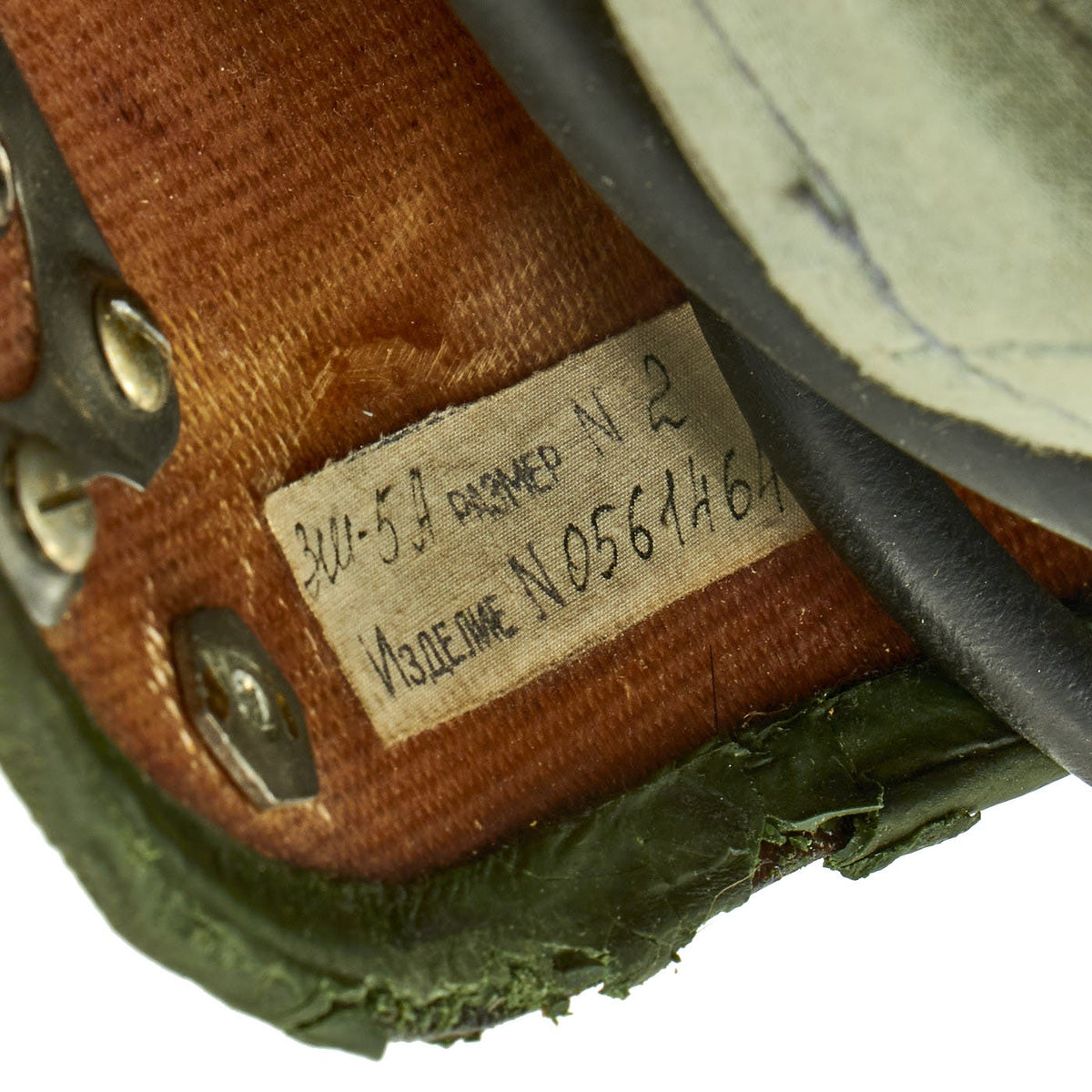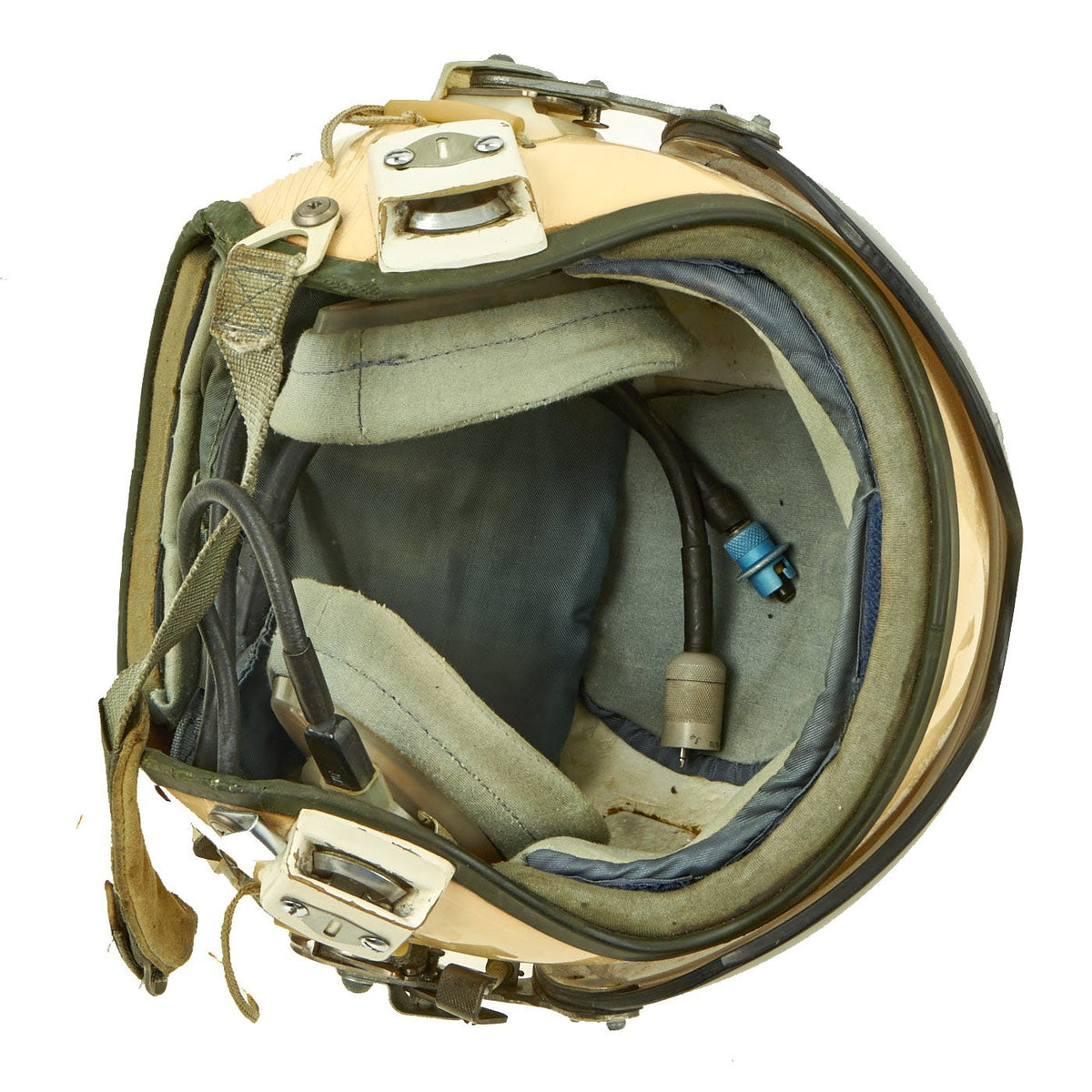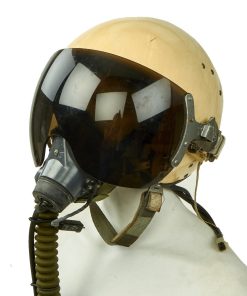Original Cold War 1970s Soviet Air Forces MiG-23 Jet Pilot ZSh-5A Helmet with KM-35 Mask & Tinted Visor Original Items
$ 395,00 $ 118,50
Original Item: Only One Available. The Soviet Russian ZSh-5A (Russian: ЗШ-5A) flight helmet was developed in the 1970s to be used with the most recent MiG fighter jets. The design was in use in the 1980s as well up to the collapse, and may even still be in use in certain countries.
This example is equipped with a tinted visor, and the correct KM-35 oxygen mask with microphone, as well as the standard avionics. The helmet still has an intact label on the inside under the right earpiece:
ЗШ-5A РАЗМЕР N 2
ИЗДЕЛИЕ N0561464
Direct translation of this is “ZSH-5A SIZE N 2 PRODUCT N0561464), giving the size and serial number of the helmet. This helmet may have been in use up until right around the soviet collapse area, and may have seen service after that. A lot of material was able to be exported from former USSR countries, which is probably where this helmet came from. The condition is very good, though it definitely does show some wear on the exterior and interior.
The oxygen mask is correctly marked KM 35 РАЗМЕР 2 (Size 2) on the rubber gasket, and the bottom may have a 1990 date, though we are not quite sure. We have seen others with this same date, indicating that production continued in various countries after the soviet collapse. Both the helmet and mask are in very good lightly used condition, perfect for any late Cold War or Soviet Collapse era collection.
Ready to display!
The Mikoyan-Gurevich MiG-23 (Russian: Микоян и Гуревич МиГ-23; NATO reporting name: Flogger) is a variable-geometry fighter aircraft, designed by the Mikoyan-Gurevich design bureau in the Soviet Union. It is a third-generation jet fighter, the world’s most-produced variable-geometry aircraft, along with similar Soviet aircraft such as the Su-17 “Fitter”. It was the first Soviet fighter to field a look-down/shoot-down radar, the RP-23 Sapfir, and one of the first to be armed with beyond-visual-range missiles. Production started in 1969 and reached large numbers with over 5,000 aircraft built, making it the most produced variable-sweep wing aircraft in history. Today the MiG-23 remains in limited service with some export customers.
The basic design was also used as the basis for the Mikoyan MiG-27, a dedicated ground-attack variant. Among many minor changes, the MiG-27 replaced the MiG-23’s nose-mounted radar system with an optical panel holding a laser designator and a TV camera.
Fast Shipping with Professional Packaging
Thanks to our longstanding association with UPS FedEx DHL, and other major international carriers, we are able to provide a range of shipping options. Our warehouse staff is expertly trained and will wrap your products according to our exact and precise specifications. Prior to shipping, your goods will be thoroughly examined and securely secured. We ship to thousands clients each day across multiple countries. This shows how we're dedicated to be the largest retailer on the internet. Warehouses and distribution centres can be located throughout Europe as well as the USA.
Note: Orders with more than one item will be assigned a processing date depending on the item.
Before shipping before shipping, we'll conduct a thorough inspection of the items you have ordered. Today, the majority of orders will be delivered within 48 hours. The delivery time will be between 3-7 days.
Returns
The stock is dynamic and we cannot completely manage it because multiple stakeholders are involved, including our factory and warehouse. So the actual stock may alter at any time. It's possible that you may not receive your order once the order has been made.
Our policy is valid for a period of 30 days. If you don't receive the product within 30 days, we are not able to issue a refund or an exchange.
You can only return an item if it is unused and in the same state as the day you received it. You must have the item in its original packaging.
Related products
Uncategorized
Uncategorized
Uncategorized
Uncategorized
Australian WWII Owen MK1 Machine Carbine SMG Custom Fabricated Replica with Sling Original Items
Uncategorized
Uncategorized
Uncategorized
Uncategorized
Uncategorized
Uncategorized
Uncategorized
Uncategorized
Uncategorized
Uncategorized
Uncategorized
Uncategorized
Uncategorized
